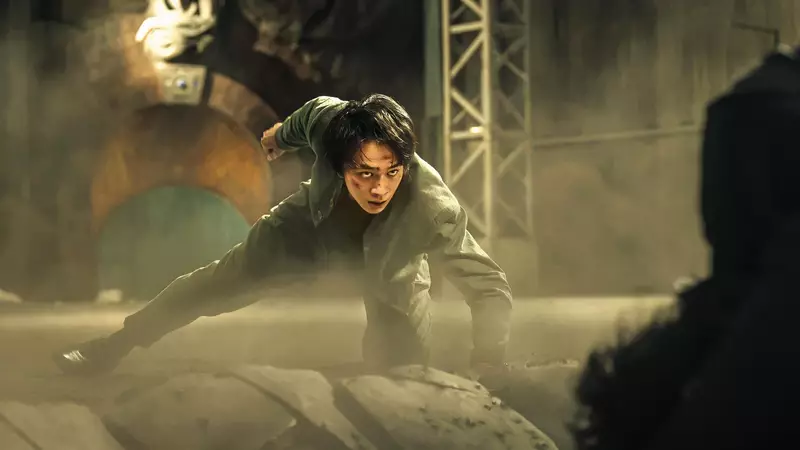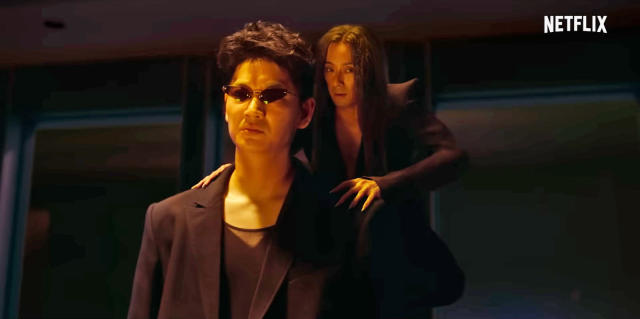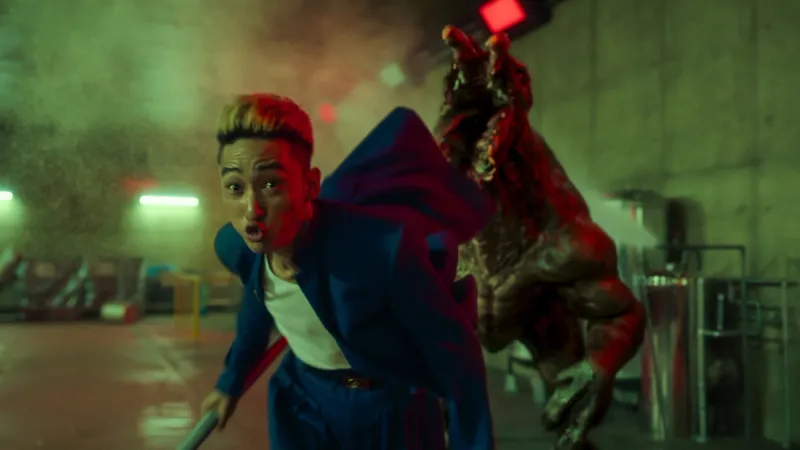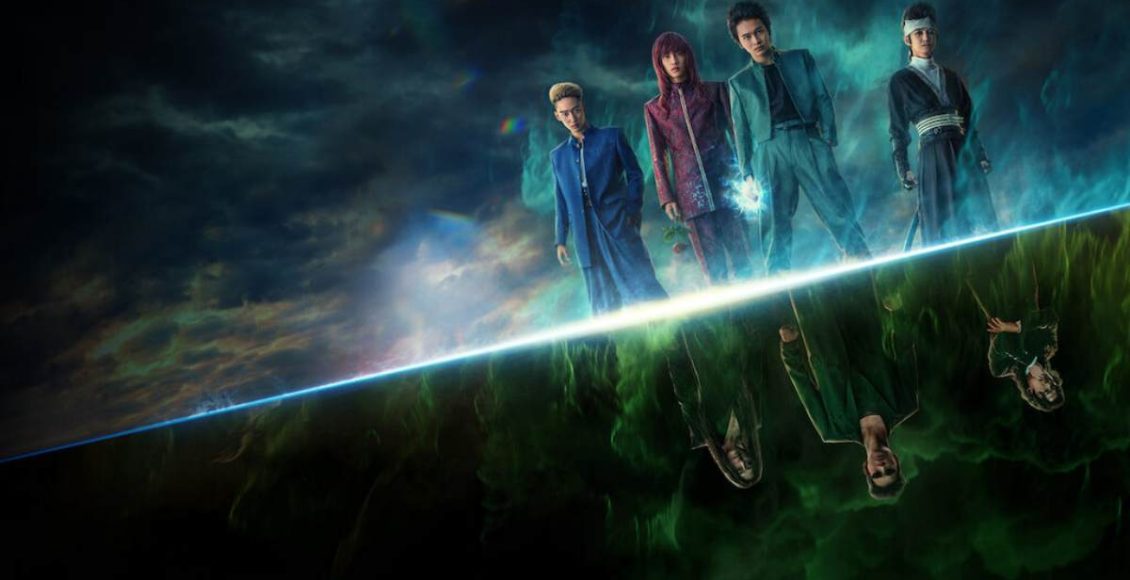Yu Yu Hakusho Series Review (Netflix) The CGI action scenes are good, but the storyline has been cut too bad.
Yu Yu Hakusho Series
Summary
In summary, the series is an adaptation of a classic 90s manga into a live-action format, featuring impressive action scenes and high-quality CGI by Japanese standards. Viewers can expect a fast-paced and entertaining experience primarily driven by action, constituting about 70% of the short 5-episode series. However, a notable drawback is the significant condensation of the storyline from Original Parts 1 to 3, which might disappoint manga enthusiasts and confuse new viewers.
Overall
6.5/10User Review
( votes)Pros
- Extremely well-executed CGI action scenes at a level in Japanese productions.
- The series concludes with a total of 5 episodes.
Cons
- The storyline, heavily condensed from the manga.
- The actors are not very suitable for their roles.
Yu Yu Hakusho A Japanese Netflix Original series consisting of 5 episodes, adapted from the legendary and highly popular manga, features a live-action rendition. The story revolves around Yusuke Urameshi, who sacrifices his life to save a child from danger, leading him to the afterlife. Chosen to be a spirit detective, he is tasked with solving mysterious cases involving evil demons.

Yu Yu Hakusho Series Netflix Review (No spoilers)
The old manga from Yoshihiro Togashi, dating back to 1990, is now just as famous as Hunter × Hunter . Despite its current popularity, at the time of its release, it was on par with the same level of fame. The work is relatively short, spanning only 4 years with 4 parts, and it has been completed. The anime adaptation was released in 1992, and there have been several versions since. The decision to adapt such an old manga might be attributed to the success of the team, which also created Alice in Borderland, a series that has gained significant acclaim and has recently announced its third season. Additionally, Netflix has successfully produced the One Piece series. The decision to adapt this popular manga seems to be a calculated risk, aiming to attract both the old fans and introduce the story to a new audience through a live-action format.
However, this adaptation, consisting of only 5 episodes, appears to be quite short. The story seems to have been condensed and combined from parts 1 to 3, resulting in a less-than-satisfactory outcome.
 Due to the combination of the original story’s three parts, a new narrative has been crafted, incorporating elements from Part 3 where a large pit opens up in the city, releasing demons that lead to Yusuke Urameshi’s unfortunate incident. He is then tasked with defeating these demons before facing his remaining friends and the main antagonist, Toguro. Readers of the original manga might not be pleased with this new storyline as crucial plot points are omitted, resulting in a significantly altered and, arguably, unsatisfactory development. Although one might comprehend the sequence of events in this new adaptation, it lacks the foundational character development that profoundly influences the characters’ growth. Those unfamiliar with the series may find certain aspects presented in the show confusing, as the series tends to present things without much explanation. and the nostalgic elements of the old content in this series also seem somewhat outdated, which even readers from that era might feel.
Due to the combination of the original story’s three parts, a new narrative has been crafted, incorporating elements from Part 3 where a large pit opens up in the city, releasing demons that lead to Yusuke Urameshi’s unfortunate incident. He is then tasked with defeating these demons before facing his remaining friends and the main antagonist, Toguro. Readers of the original manga might not be pleased with this new storyline as crucial plot points are omitted, resulting in a significantly altered and, arguably, unsatisfactory development. Although one might comprehend the sequence of events in this new adaptation, it lacks the foundational character development that profoundly influences the characters’ growth. Those unfamiliar with the series may find certain aspects presented in the show confusing, as the series tends to present things without much explanation. and the nostalgic elements of the old content in this series also seem somewhat outdated, which even readers from that era might feel.
However, being produced by the Alice in Borderland team, which is known for its clear strengths in action scenes and high-quality CGI, this series follows a similar path. It emphasizes action scenes blended with top-notch CGI, a hallmark of Japanese production (though not quite on par with Western standards). Despite condensing the story into just 5 episodes, a significant portion, around 70%, is dedicated to intense action scenes. The narrative is briefly outlined before plunging into a continuous series of confrontations with adversaries. While the storyline might not be particularly impressive, it must be acknowledged that the substitution with combat scenes is executed exceptionally well. The live-action adaptation captures the excitement of battle scenes, much like the original manga, especially showcasing the protagonist’s and Toguro’s powers. This is indeed the main highlight and selling point that truly entices viewers. (But there is also a significant cut in the number of enemy characters).

As for the cast members, initially, the writer wasn’t impressed with anyone based on the first look. However, upon closer inspection, many turned out better than expected. Yusuke Urameshi (played by Takumi Kitamura ) captures the character’s mischievous nature and rough language, yet maintains a good-hearted essence that aligns well with the original. The standout performance comes from Kuwabara (played by Shuhei Uesugi), who excels in delivering comedic moments, adding a relaxed and enjoyable tone to the series. The character’s determination is also effectively portrayed, making the audience empathize despite the limited screen time.
On the downside, Kurama and Hiei (played by Jun Shison and Kanata Hongō, respectively) are somewhat disappointing. Both actors appear somewhat unconvincing, and their characters are overshadowed by peculiar wigs they wear. Their roles are minimal, with only one significant fighting scene each, making them feel more like supplementary elements rather than integral to the story. On the positive side, Botan (played by Kotone Furukawa) is a good addition, despite not resembling the original character physically. Her performance is charming, and she adds delightful moments to the narrative. Koenma (played by Keita Machida), appearing in an adult form, deviates from the infant appearance but retains a quirky pacifier, creating a unique and somewhat peculiar visual. The remaining characters are rather ordinary, lacking memorable attributes.
 The series concludes with a clear resolution, wrapping up the entire story without leaving any lingering cliffhangers. However, there is still potential for continuation, given that the original manga. Whether Netflix decides to produce more episodes may depend on the audience response. If the reception is positive, there’s a possibility of further adaptation, potentially in the same short 5-episode format.
The series concludes with a clear resolution, wrapping up the entire story without leaving any lingering cliffhangers. However, there is still potential for continuation, given that the original manga. Whether Netflix decides to produce more episodes may depend on the audience response. If the reception is positive, there’s a possibility of further adaptation, potentially in the same short 5-episode format.
In summary, the series is an adaptation of a classic 90s manga into a live-action format, featuring impressive action scenes and high-quality CGI by Japanese standards. Viewers can expect a fast-paced and entertaining experience primarily driven by action, constituting about 70% of the short 5-episode series. However, a notable drawback is the significant condensation of the storyline from Original Parts 1 to 3, which might disappoint manga enthusiasts and confuse new viewers.

